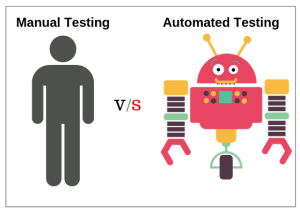Manual testing may not always be centered in modern QA conversations. But it’s as Manual quality assurance testing remains crucial today and forms the basis of a positive user experience. In the end, manual testing should always be a part of the software development lifecycle.
Taking more manual testing courses is the most effective strategy to overcome the most debatable comment regarding manual testing:
“Why bother if automated tools can do it.”
Your company’s or team’s bottom line will profit, and the appreciation for the advantages of manual testing will only increase if you can make your company comprehend the value of manual QA.
You also have to know everything about manual quality assurance testing ‒ this is where this article will help you in covering blind spots.
Important Traits for Manual QA Testers
In manual testing, the tester has to manually interact with an application or website to search for bugs and other problems with the user experience — from barely noticeable ones like wrong text margins to crucial ones like navigation issues.
Writing test cases, doing quality assurance testing, and reporting any bugs or problems with the user experience to the developers are the main duties associated with manual testing.
These are the fundamentals of manual testing for websites and mobile applications.
It’s important to possess certain soft skills, or perhaps even specific personal traits, to excel as a manual tester:
- Attention to detail
- Creativity and out-of-box thinking
- Great communication skills
As a manual quality assurance tester, you have to run many repetitive tests and come up with new scenarios. All of this is done with a single objective in mind ‒ to make the final software product easy to use and bug-free.
Working on User Experience
The capacity to enhance user experience is one of the manual testing’s most crucial features. All flaws degrade the user experience, so anything an automatic script can uncover would be beneficial.
However, a human person can spot problems with an app or website that a script could easily miss because it doesn’t understand the concept of human viewpoint.
Working with Test Cases
How can a manual tester ensure that their testing is sufficient in scope? You don’t want to avoid testing any crucial components, yet it’s simple to forget anything during a quick testing session.
Test cases are useful in this situation. Although it’s crucial to include test cases wherever the schedule allows, there are occasions when it’s simply not possible to pause and write them before testing.
Bug Reporting
It’s difficult to exaggerate how crucial it is to communicate and submit excellent bug reports.
They must be simple to read and comprehend while also providing enough technical information for developers to locate and finally fix the issue.
What’s the Difference Between Manual and Automated QA Testing?
Ideally, an engineering team must have both manual and automated quality assurance testers.
Instead of depending on one person to perform both forms of testing, it’s preferable to have distinct manual and automated testers.
It’s essential to have experts in both manual and automated testing because they might call for distinct skill sets that one specialist can’t have at the same time.
The interaction of manual and automated testers has to be cooperative in an ideal environment. Manual testers can create test cases for both the entire app or site and any upcoming features.
These test cases can then be used by software development engineers in test to figure out which specific procedures have to be automated.
Any new features can be thoroughly tested by manual testers, who often utilize a real person’s point of view, especially when evaluating the user experience.
Regression testing can, however, be covered by automated test scripts, relieving manual testers from doing a lot of repetitive and monotonous work.
Together, manual and automated testers can optimize the quality assurance process and make each other’s life simpler.






